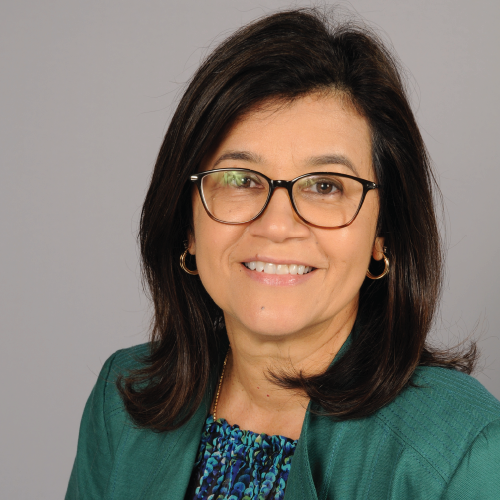Guest Post: Making the Most of Your Summer Fun(ds)
May 03, 2023
This guest blog post was written by AASA President-Elect 2022-23 Gladys Cruz about leveraging ARP dollars for afterschool or summer programs.
As the incoming president of AASA in July, I will be focused on “Leading in a New Era: New Challenges, New Approaches” over the next year. I believe that sharing resources and best practices as an association can help us ensure that students of all ages, abilities, backgrounds, and interests can reach their full potential. Specifically, I believe that investing in summer learning programs is critical to the success of our students, particularly those impacted by the pandemic.
Accordingly, over the next few months, we’ll be sharing some actionable steps you can still take before and during Summer 2023, drawing from evidence-based practices culled from RAND research commissioned by The Wallace Foundation. For each suggestion, we will also share links to concrete resources from the online Summer Learning Toolkit that we think will be helpful, just-in-time support for your district’s summer learning team.
Summer programming provides a key opportunity to accelerate recovery and support your students’ physical and mental health, social and emotional development, and academic learning. It can also be a great use of your American Rescue Plan funds whether you are meeting or exceeding the minimum portion of the American Rescue Plan’s Elementary and Secondary Education Emergency Relief Fund (ESSER III) that must support afterschool or summer programming.
The good news: Even at this point in the spring, it’s not too late to plan (or tweak existing plans for) a robust, high-quality summer learning program in your district, and you don’t have to reinvent the wheel. We’re starting this monthly series about the summer with a focus on one of the most important parts of a summer program: the people. Now is the time for district, school, and program leaders to focus their efforts on ensuring that they have the right people in place for an impactful summer—especially given staffing shortages:
Engage principals and trusted leaders to identify and recruit highest priority teachers. RAND found that partnering with principals was a successful strategy—specifically when principals explained the importance of the summer program and why they thought the invited teacher was critical to the program’s success. Principals can also help to share what previous teachers enjoyed about working in the summer learning program. When you’re thinking about recruiting and placing teachers, don’t forget to concentrate efforts on teachers with relevant grade and subject matter expertise!
Tip: The Staffing and Professional Development page of the Toolkit contains staff handbooks examples from three districts, staffing models and over 27 job descriptions, as well as tips for planning high-quality professional development.
Provide additional support to adapt and pace curricula for the summer session. Teachers can’t do it all alone. It takes time to plan and prepare easy-to-implement instructional materials and pacing guides that are appropriate to the time available in summer programs—and it’s also not a simple or straightforward task. Curriculum experts are a necessary ingredient to accelerate learning for students during the summer. If you haven’t done so already, think about how you can leverage (and incentivize) key curriculum expertise in the time leading up to your program.
Dedicate time to planning enrichment. Summer programming is not just about academics. In many cases, having quality enrichment offerings is the key to attracting and retaining students. Not only is enrichment what sets summer learning apart from punitive summer school models and a way to address opportunity gaps, it’s often the “carrot” that gets kids to sign up and show up throughout the summer. Whether enrichment will be provided through community partners or through your teaching staff, it is critical that instructors have strong content knowledge and that activities are intentionally planned and sequenced throughout the summer.
Tip: Additional guidance on high-quality enrichment partner selection, including sample RFPs, rubrics, and MOUs are available on the Academics and Enrichment page.
Of course, adults aren’t enough for a successful summer program—we need students to participate, especially the students who most need the extra support. There is still time to ramp up and target your student recruitment efforts as well:
- Personalize outreach to students and families to encourage them to attend. Families and kids want their summers to be positive, memorable, and enriching experiences. Because the goals of summer learning programs may be relatively new or unknown, successful summer recruitment efforts should focus on getting the word out regularly and often through multiple strategies and through people kids and families trust. Engage your principals, teachers, and parent liaisons. Give them materials and messaging that accurately describes the program vision and why they should enroll their children. Share the mix of academics and fun within the schedule, as well as attendance expectations. Interestingly, focus group research found that families respond best to aspirational messages about helping their kids get a jumpstart on the next school year. Positioning your program as an opportunity that is provided at “no cost” was found to be associated with higher quality than noting a program is “free.”
- Tip: There are a wealth of resources that you can adapt to market your program, equip messengers, create recruitment materials, and use tracking systems on the Student Recruitment and Attendance page and within the Summer Learning Recruitment Guide.
Perhaps most importantly, know that you are not alone in thinking through an expedited planning process to deliver a high-quality program this summer. Here’s one more resource to consider: Developed by the Texas Education Agency and drawing from the Summer Learning Toolkit, this Summer Learning Work Plan provides guidance to districts and schools on how they might approach an expedited summer planning process between April and August.
We’ll be back next month with more just-in-time suggestions for making the most of your summer and your remaining federal recovery funds. Click here for more of AASA’s Learning Recovery & Redesign Guidance, which we’ve designed to help you both meet immediate needs and redesign toward a more student-centered, equity-focused, and future-drive approach.
Access all the latest updates on the American Rescue Plan Key Issue page.



